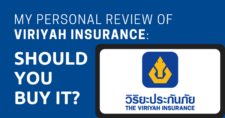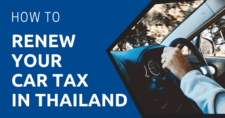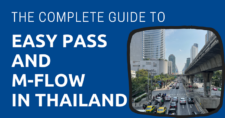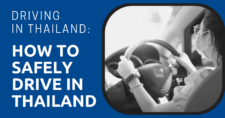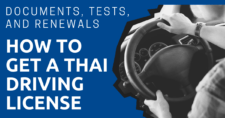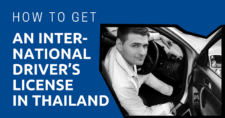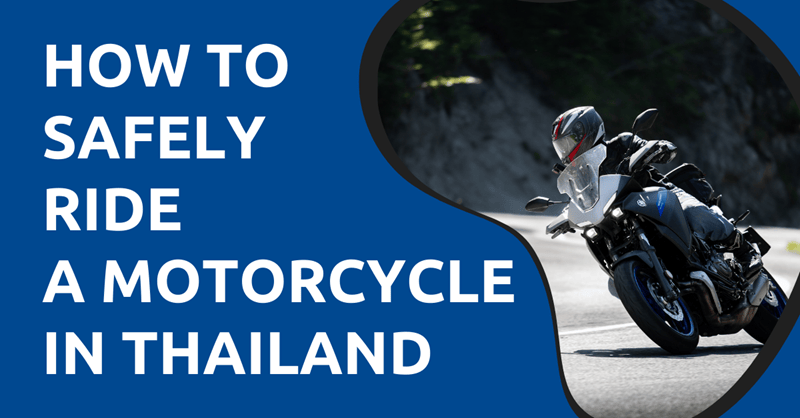
There are plenty of benefits to riding a motorcycle in Thailand. They’re cheap to buy, cheap to run and maintain and they’re narrow enough to squeeze you through the endless gridlock that plagues most Thai cities.
Having a motorcycle gives you the freedom to go wherever you want, whenever you want, without having to wait on unreliable taxi services, and it’ll save you a tonne of money, too.
However, there’s no denying that motorcycles can also be extremely dangerous. Each year in Thailand, motorcycles account for over 70% of all road traffic accidents.
When you take your motorcycle on the road, you’re whizzing along at high speeds without the nice protective metal cage a car or van provides – all it takes is a car to pull out at the wrong time or to hit one of the many potholes on the road at just the wrong angle and you too could be one of those statistics.
Some would argue that this means you’re better off avoiding motorcycles altogether.
However, there are ways to mitigate the risks – and in this article we’ll cover some of them.
Riding a motorcycle will never be 100% safe – you are, after all, contending with lots of other drivers on the road and accidents do happen. But by following the advice in this article, your chances should improve.
"*" indicates required fields
Disclaimer: This article may include links to products or services offered by ExpatDen’s partners, which give us commissions when you click on them. Although this may influence how they appear in the text, we only recommend solutions that we would use in your situation. Read more in our Advertising Disclosure.
Contents
Getting Your Motorcycle Licence
The first and most basic step to take in ensuring your safety on the road is to ensure you have a proper motorcycle licence.
Granted, many drivers on the road do not carry motorcycle licenses, and although the penalties are ostensibly severe (a 2,000 baht fine or one month in prison), in reality you are more likely to have to pay a small on-the-spot fine if caught without one.
However, many insurers will not pay out on medical expenses or vehicle repairs if you get caught in an accident without a valid Thai or international driving license – so go get one!
For the full process of acquiring a Thai motorcycle driving license, check out our article here.
Road Conditions
Potholes lurk unpredictably, posing a significant hazard to riders like hidden traps. These road imperfections, – sometimes giant craters – can wreak havoc on a motorcycle’s stability and jeopardise the safety of the rider.
The lack of proper maintenance or timely repairs leaves some roads riddled with uneven surfaces that amplify the risk of accidents. Riding through the maze of potholes becomes an intricate dance, demanding constant vigilance and split-second reactions.
When you consider that for about four or five months of the year, much of Thailand is covered in water from the monsoon season, this creates even more concerning driving conditions.
Driving Habits
Thai people’s driving habits reflect a unique blend of cultural nuances and the dynamic nature of traffic in the country. Motorcycles make a great deal of traffic on Bangkok roads, zipping between cars and finding creative spaces to manoeuvre.
To get around a hectic city like Bangkok people seem to focus on flexibility and adaptability rather than rigid adherence to traffic rules and lane markings and signals often serve just as loose guidelines – unless uncle police officer is waiting nearby.
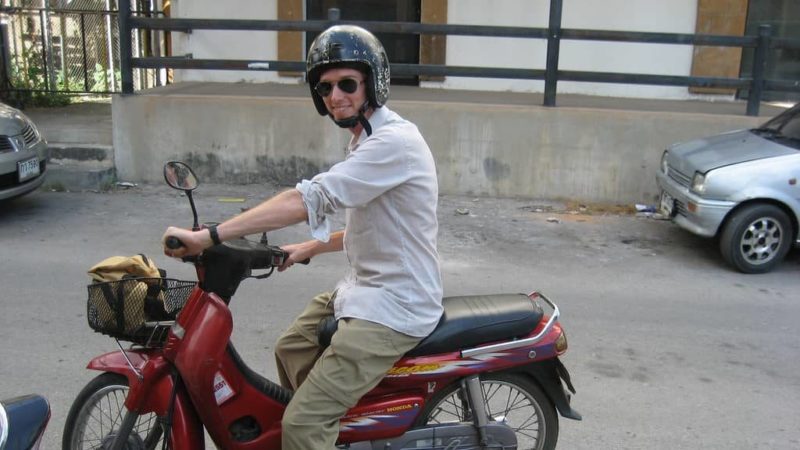
With drivers seamlessly weaving through traffic in a manner that might seem chaotic to outsiders you will need a lot of practice to get used to the ways of the roads.
Honking is not necessarily an expression of frustration but can be a form of communication, signalling intentions or announcing presence.
Patience is a virtue, especially in traffic jams. Despite the seemingly unstructured nature of Thai driving, a sense of shared understanding prevails on the roads, contributing to a unique driving culture where someone will cut you off, but make up for it with a deep bow of appreciation.
Safety Gear
One thing you’ll quickly notice when you take to the road in Thailand is that the majority of riders have a much more … laid-back approach to safety gear than you’re probably used to.
It’s exceptionally rare to see motorcycle riders in full protective leathers with kneepads, arm-pads etc. The relentless tropical heat makes the gear uncomfortable.
Add in lax to non-existent enforcement and the fact that for many people their motorcycles are something to get them to work and back rather than to take on tour and few people are willing to spend the time suiting-up and then suiting-down again for a ten minute ride in traffic.
So while we do recommend that in the interests of safety you should wear the proper gear, we’ll cede the point that it’s fairly impractical to do so every time you set out – and not doing so will in no way mark you out as unusual.
At the very least, though, you should always wear a helmet (Thai police do, in fact, frequently pull over motorcycle riders and passengers for not doing so), good, hardy shoes (NOT flip-flops), hard-wearing jeans or trousers and a light jacket.
None of these things will offer you much protection in a high-speed crash, but you might save some skin if you take a tumble at low-speeds.
Helmets
After you buy your own motorcycle, it’s worth investing in a good-quality helmet, as protecting your head should be your biggest priority.
It really doesn’t take a particularly heavy knock to cause severe concussions or even permanent brain damage – you could fall the wrong way while waiting at traffic, crack your head the wrong way on a kerb and it’s game over.
When shopping for a helmet, always look for brands with international certification. The US DOT (Department of Transportation) runs all helmets through rigorous tests before certifying their safety, so look for DOT-certification where possible. Good-quality helmets may also be Snell or ECE-certified (both European).
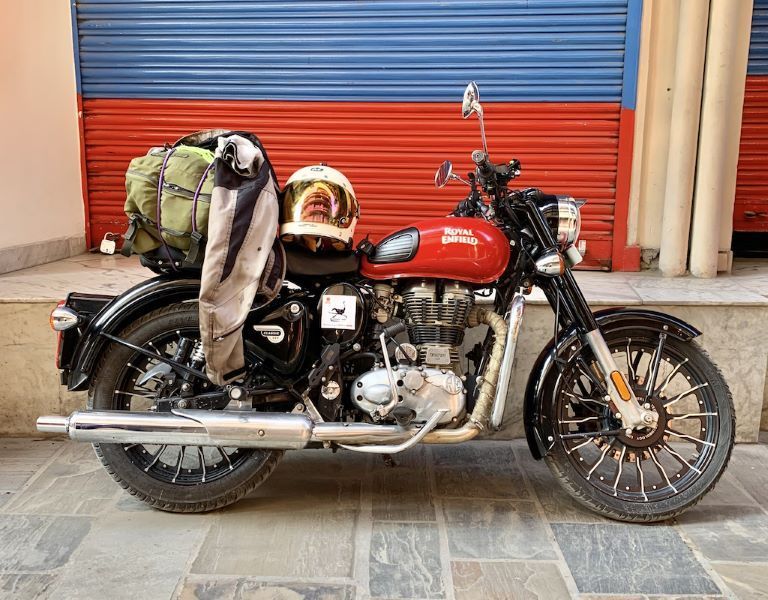
A full-face carbon or carbon/kevlar helmet is the safest option. Make sure to try it on before buying – it should fit nice and snugly around your head. If it’s loose in any way, it’s not safe. Don’t worry about the heat – good-quality helmets will offer good ventilation.
You can find good-quality helmets online and at most motorcycle dealerships. Here are a couple of helmet shops around Bangkok with a good selection that you might want to check out:
- Amnuaychai Helmet Shop – Thanon Chan in Sathorn
- Motoplex Bangkok – Near K-Village Rama 4
- AUTO2SPEED Helmets – In Old Town
- BKK Speed – Near Ratchathewi
Other Gear
If you’d like to wear proper gear, aim for anything mesh-lined and lightweight, not pro-laminate.
You’ll quickly appreciate gear which can breathe in the tropical heat.
It’s a good idea to pack a lightweight poncho to wear during rainstorms instead of the heavy waterproof/thermal layers you might have seen in more temperate climates.
IKEA sell cheap yet perfectly serviceable rain ponchos, or you can buy one from any 7/11 in a pinch.
If you’d like to buy your gear in Thailand rather than bringing it in from your home country, Wemotorbike has a great selection of stuff available, including jackets, gloves, boots, and more.
Rules of the Road
Although it might seem like traffic laws are more of a suggestion on Thai roads at times, it is still nevertheless in your best interest to follow the rules. It’s not just safer to do so – you may be liable for damages if you happen to have an accident while breaking the law, even if it’s something ‘everyone does’.
Obviously we don’t have space here to fully document all rules of the road that motorcycles need to follow in Thailand (and you’ll cover that when you’re getting your licence anyway), but we can cover the basics here:
The Basics
Keep to the Left
By law, all two-wheeled vehicles should drive in the left-most lane at all times unless overtaking.
You’ll quickly find that this is often impractical, as the left-most lane is occupied by turning cars, vendors, parked cars, pedestrians forced off the pavement, and so on, but it’s a good idea to gravitate back to the far left whenever possible.
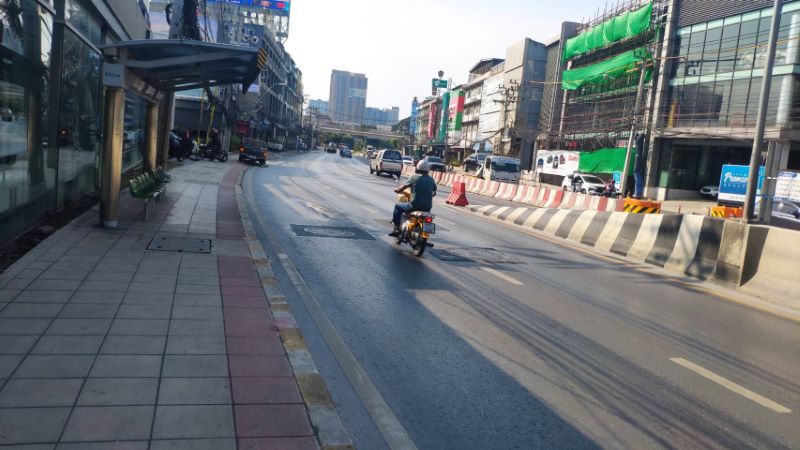
Take blind turns on twisty rural roads as far to the left as possible to avoid oncoming cars that may veer into your lane.
Obey the Speed Limits
The speed limit for motorcycles in built-up areas is 80 km/h, going up to 90 km/h on rural roads. 80 km/h should be more than enough for a big congested city like Bangkok, where other vehicles can come flying across your lane without warning. Keeping your speed down to 50 to 60 km/h is much more sensible.
Don’t Under-Take
One of the more dangerous (and yet depressingly common) habits of Thai motorcyclists is under-taking, e.g overtaking a car on its left-hand side, rather than around it on the right (as stated by Thai law).
Under-taking will out you smack-bang into a turning car’s blind spot, and you risk being smashed into unless the car driver has very fast reflexes.
Don’t do it – at the very least you will have to deal with a seriously annoyed driver.
Be Careful While Driving Between Lanes
Getting to weave between traffic is one of the big perks of riding a motorcycle, but it is not without its dangers. A car door suddenly opening or a passenger stepping off a bus can wipe you out in an instant, and your view ahead and to the side is obscured by other vehicles.
If you are stuck in traffic and want to weave through, proceed slowly and carefully, ensuring you have plenty of space on either side.
Keep Off Expressways
By law, motorcycles can not drive on either toll roads or expressways. As these roads are often behind toll booths (which will turn you away immediately) and heavily signposted ahead of time, this is a mistake you’re unlikely to make, but do bear it in mind when you’re planning your travel.
You should set your Google Maps route options to “avoid highways” and “avoid tolls” so that you don’t get steered in the wrong direction.
Dos and Don’ts
Do Keep Your Motorcycle in Good Shape
Letting your motorcycle get run down opens you up to all kinds of potential accidents, whether it be worn-down tyres, a broken taillight, or faulty brakes.
At the very least you should take your motorcycle in for an annual check-up, making sure the tyres, brakes and oil levels are all checked and changed if needed.
Do Make Sure You’re Fully Insured
You can be the best driver in the world and yet accidents can still happen.
You should make sure both you and your motorcycle are fully insured before taking to the road, and make sure you’re carrying your cards with you every time you take your motorcycle out – plus a photocopy of your passport page/visa page (which you technically should have on you at all times in Thailand anyway, by Thai law) in case of accidents.
Do Use Your Mirrors
I’ve lost count of the number of times a quick glance in my mirror has saved my life. Use them! Other vehicles can come from behind with little to no warning – you don’t want to be switching lanes when that vehicle is a speeding bus.
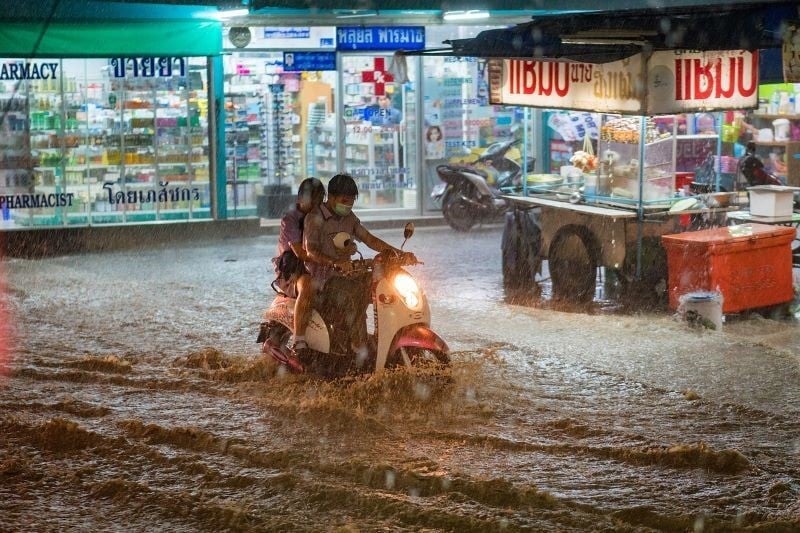
You should also adjust your mirrors to make sure you’ve got a good view on both your left and right sides, and keep them nice and clean.
Do Indicate
Indicating is done fairly arbitrarily in Thailand, when it’s done at all – I see someone indicating the wrong way before a turn almost daily. However, Thai traffic laws do state that you always need to indicate before turning or overtaking. Not only is it considerate to other road users, but you may be liable for damages if you do get into an accident while turning or switching lanes without indicating.
Do Keep Senses Sharp
Roads in Thailand can be a little … unkempt at times. Potholes, bumps, strewn objects, tree roots, railway lines, and wandering pedestrians. These can all cause a nasty accident if they take you by surprise. Keep your eyes on the road ahead at all times. It can be particularly hard to notice some obstructions when the sun is at its brightest – consider wearing good-quality sunglasses.
Don’t Look at Your Phone
Unless you really need your phone for map navigation, don’t have it in a phone holder in front of you. It is just too distracting. That text might pop up from your ex, that call might come in for that job you interviewed for, whatever it is, if you look down at the phone for even a split second, it could mean disaster.
Don’t Lose Your Temper
No one has ever claimed that driving in Thailand is safe. You WILL witness bad driving every time you take to the road – undercutting, driving down the wrong side of the road, speeding, etc.
It’s just how it is. Keep plenty of distance between you and the other vehicles on the road (about a car’s length is a good idea), and if you are the victim of poor driving, take a deep breath and don’t let it get to you.
Some drivers in Thailand are armed – anything from a machete or baseball bat all the way up to firearms. Odds are that a road rage incident will end very badly for everyone involved. Keep a cool head at all times.
Avoid Driving At Night or In Bad Weather When Possible
Driving your motorcycle at night can be disorientating and dangerous. There’s a much greater chance of falling foul of drunk-drivers or failing to see a pothole until it’s too late.
Similarly, heavy rain increases the chance that you’ll skid out of control, get bogged down in floodwater or have your vision obscured. Unless absolutely essential, it’s usually a better idea to get a taxi or tuk-tuk or to wait it out at these times.
What To Do in Case of an Emergency
No matter how safe you are as a driver, accidents can (and do) happen.
If you’re in a minor accident (no serious injuries, not too much damage to your motorcycle), you should quickly move your motorcycle out of the path of oncoming traffic if you can.
If another driver is involved, contact the police by dialling 191 (1155 for the Tourist Police if you’re Thai isn’t great and/or you can’t get through to an English speaker) – you’ll need their report for your insurer.
If another vehicle was involved, do not drive away – you’ll be liable for damages even if you were completely innocent. Take pictures of the motorcycle, the other vehicle, and any injuries you have, and contact your insurance provider immediately.
Also exchange details (name, telephone number, insurance details, Thai ID card/passport) with anyone else involved.
It is an unfortunate fact of life in Thailand that as a foreigner the police and/or insurers are more likely to take a Thai driver’s word over yours in case of an accident, which means you may be forced to pay out even if the accident wasn’t your fault. A cheap helmet-cam is a good way of getting around this.
If you’re in a major accident, don’t try to get up (unless you’re in the path of a fire) – if you’ve injured your neck, sudden movement might break it outright.
Generally speaking Thai people are very good at springing into action when accidents happen on the road – expect the locals to get a perimeter set up quickly and for someone to call the emergency services. Then, you will be sent to a nearby hospital.
There are very few areas of Thailand which are more than an hour’s drive from a town or village, so help will likely arrive soon wherever your accident happens.
Now, on to You
Driving a motorcycle in Thailand can be an inexpensive and convenient means of transportation, but it’s not without its dangers.
Always make sure you’re wearing protective clothing (especially a helmet), make sure you’re fully licensed, registered, and insured and drive defensively to improve your chances of making every journey safely.



